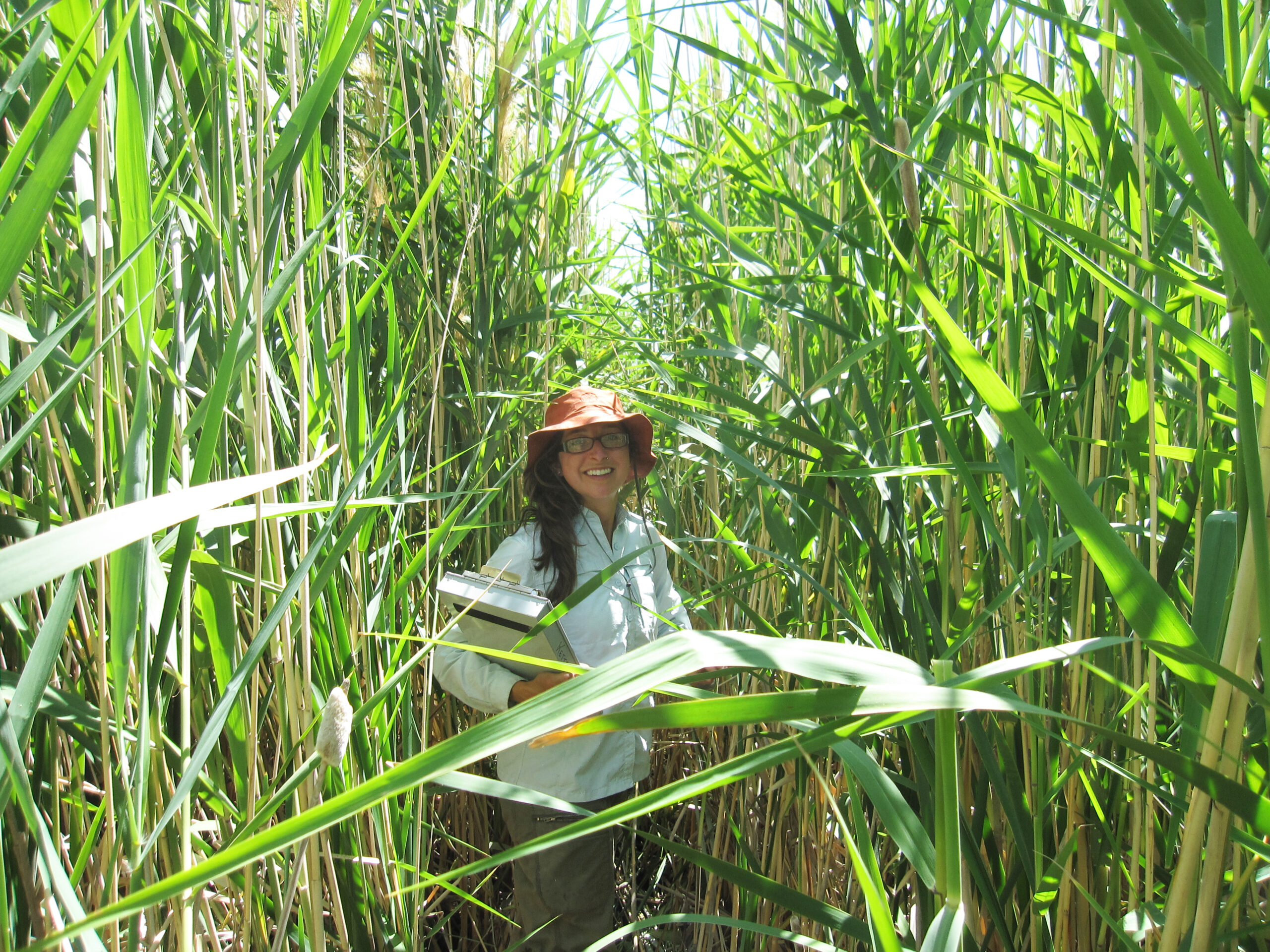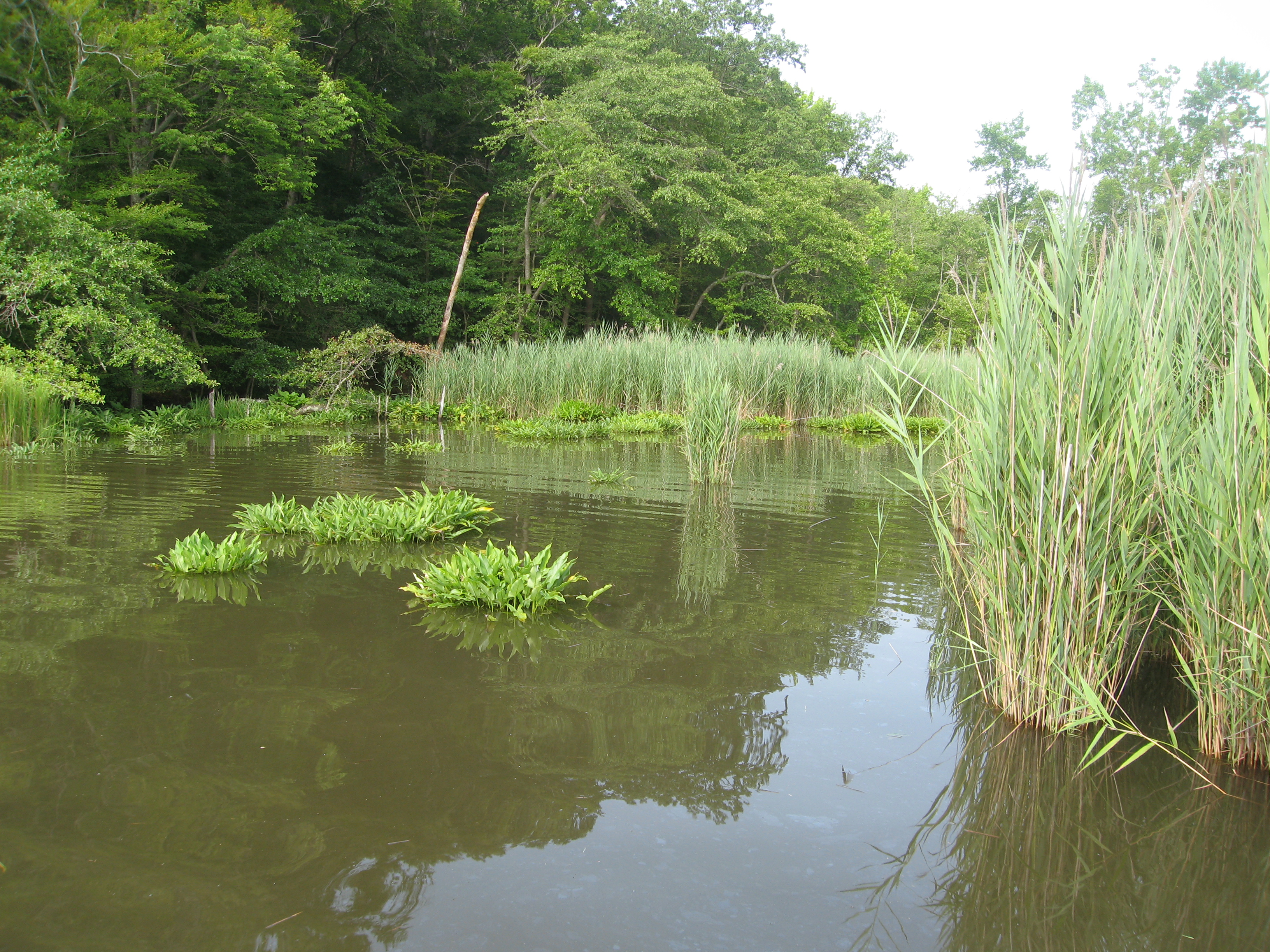by Kristen Goodhue
There’s still time to defeat Phragmites, an invasive reed running rampant throughout the U.S., including Chesapeake Bay wetlands. But controlling Phragmites is not easy, and it cannot be done everywhere. A new study published January 24, 2023 revealed new insights into where Phragmites control stands the best chance of success, and what wetlands might look like as native species return.
Phragmites australis, also known as the common reed, began exploding across the Chesapeake in the 1970s. While a native strain exists, it has been hard-pressed to compete with the invasive strain from Eurasia. It forms dense stands with shoots that can grow over 15 feet tall, eventually crowding out native plants.
“Very few native species can survive with Phragmites being present,” said Dennis Whigham, a plant ecologist with the Smithsonian Environmental Research Center (SERC) and coauthor on the publication. “So effectively, you do away with whatever was there naturally prior to the invasion of Phragmites, and you end up with a monoculture of Phragmites.”
Past efforts to control it have often ended in frustration. Phragmites has a talent for comebacks. Most of the plant’s biomass is actually below ground. Its extensive underground network includes a “bud bank” that enables it to resprout like a hydra, sending up several new stems when one stem gets mowed down. Even with herbicides—currently considered the best method for knocking it back—a one-time application is rarely enough. If even a little Phragmites survives, or a nearby patch supplies it with new seeds, it can recolonize a year or two later with a vengeance. However, in a few cases, a strategy that failed in one place has met with success somewhere else.
The new study took a more holistic look at wetlands in an attempt to understand why.
“The big blind spot was this observation…that you can do the same management in different locations, and come up with very different results,” said Christine Rohal, lead author and postdoctoral fellow with the University of Florida. “And it can be very challenging from a management perspective to have these kind of constant conundrums.”
The team did a five-year study, attempting to control Phragmites in eight different wetlands in the Chesapeake Bay. During the first year, they hired a helicopter to spray herbicide on Phragmites at each site. They applied the herbicide in October, when most other plants had stopped growing for the year, to minimize the risk to native plants. Since the researchers knew one year of treatment would not be enough, they returned the next two years with backpacks of herbicide to spray resurgent patches. Eric Hazelton, then a SERC predoctoral fellow from Utah State University, led the field work for that effort. For the first three years, and for two additional years, Hazelton and his colleagues studied the plant responses at all eight sites.
The multiyear treatment and monitoring largely paid off: By the end of the study, Phragmites had decreased across all eight sites, and native plants had begun to reappear. However, things did not completely return to the way they were. The vegetation at the treated sites continued to be different from vegetation in nearby areas that had never been colonized by Phragmites.
The team also identified a landscape pattern that helped predict how native plants would respond to Phragmites removal. The biggest key to success lay not in the treated Phragmites sites themselves, but in their surroundings. Sites with diverse native plant communities nearby were more likely to see a high cover of native plants return after Phragmites treatment.
Rohal hopes these findings can give managers a better sense of low-hanging fruit they can target with limited resources. But it is crucial to commit for the long haul, especially in tougher sites.

“If you choose to spray herbicide once or twice in one of those highly degraded areas without a long-term plan to come back to it, then the likelihood is that you’re going to just get Phragmites again,” she said.
But there may be another, less obvious lesson that offers some hope for preserving pockets of native species. Across the Chesapeake Bay, Phragmites is now so abundant and widespread that large-scale removal is too costly—even though accepting this means it will continue to spread and endanger remaining native plant communities. However, the researchers found some areas in the bay where the number of Phragmites patches is small enough that complete removal may yet be possible. Targeting smaller patches of Phragmites, while less glamorous than wiping out large swaths, could ultimately lead to more success with less effort.
“We have lost so many of our wetlands in the Chesapeake Bay already,” said Karin Kettenring, coauthor and wetland ecologist at Utah State University. “It is essential to preserve what we still have left while restoring degraded wetlands to the best possible condition. Healthy wetlands with abundant native plants provide the best wildlife habitat while also being more resilient to stressors like storm surge, pest outbreaks and rising temperatures.”
Whigham said there are subestuaries within the Patuxent and Potomac rivers where Phragmites patches are few in number and could potentially be eliminated. This would increase the chance that some places remain a refuge for native plants. But time is of the essence.
“We as a people in Maryland still have the opportunity to have native plant communities for future generations to enjoy,” he said. “If we took care of it now, we could do it. But if we wait and wait and wait and wait, there’ll be fewer opportunities to do it.”
Learn more
Jekyll or Hyde? The Many Faces of Phragmites
Environmental “Forensics” Pieces Together Mysterious Phragmites Invasion
Invasive Plants Can Boost Blue Carbon Storage


